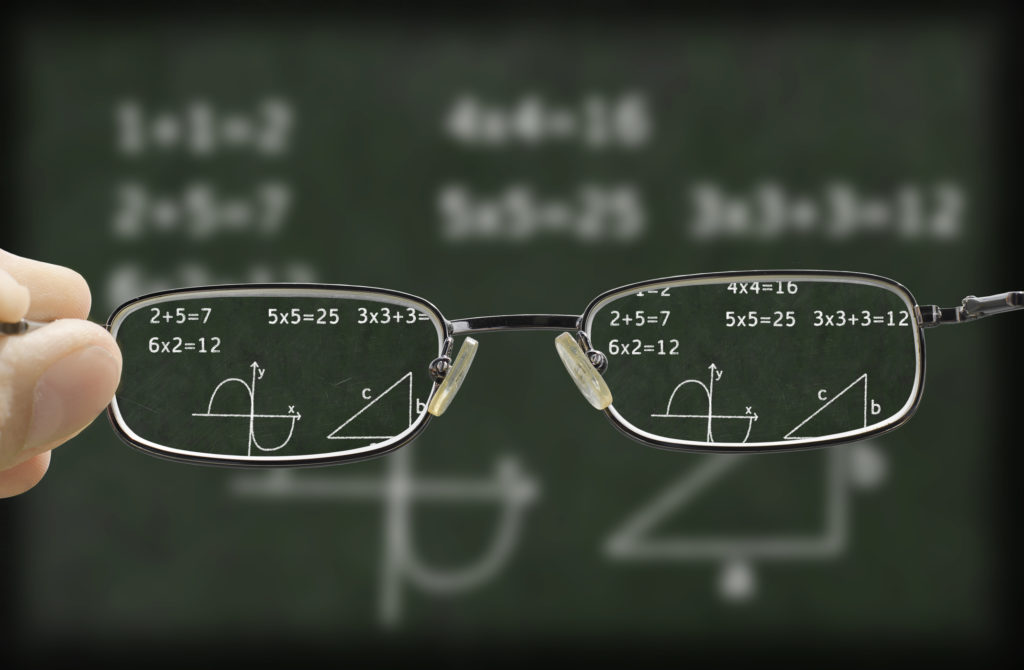February 6, 2019
Padmaja Sankaridurg, BOptom, MIP, PhD
Brien Holden Vision Institute
 It is undeniable – the myopia epidemic is well and truly here. In many East Asian countries; for example, Singapore, China, and Taiwan, nearly 80% of school leavers are myopic.1-4 But is it simply a problem of East Asia and a subject that the rest of the world can ignore? Although geographically disproportionate in prevalence, observations indicate that myopia is significant elsewhere too. For example, researchers from the National Eye Institute documented that myopia prevalence in the United States rose from 25% in the early 1970s to nearly 42% in 2004, an alarming 68% increase.5 The European Eye Epidemiology consortium estimated the prevalence of myopia to be approximately 31% (using the 2010 European standard population), in adults aged ≥25 to ≤ 90 years, but the prevalence was even higher in the younger participants at 47.2%.6 Furthermore, the statistics indicating future prevalence are troubling. It is estimated that nearly half the world will be myopic by the year 2050.7
It is undeniable – the myopia epidemic is well and truly here. In many East Asian countries; for example, Singapore, China, and Taiwan, nearly 80% of school leavers are myopic.1-4 But is it simply a problem of East Asia and a subject that the rest of the world can ignore? Although geographically disproportionate in prevalence, observations indicate that myopia is significant elsewhere too. For example, researchers from the National Eye Institute documented that myopia prevalence in the United States rose from 25% in the early 1970s to nearly 42% in 2004, an alarming 68% increase.5 The European Eye Epidemiology consortium estimated the prevalence of myopia to be approximately 31% (using the 2010 European standard population), in adults aged ≥25 to ≤ 90 years, but the prevalence was even higher in the younger participants at 47.2%.6 Furthermore, the statistics indicating future prevalence are troubling. It is estimated that nearly half the world will be myopic by the year 2050.7
GLOBAL SNAPSHOT Reported myopia prevalence in selected countries

Source: https://www.globalmyopiacentre.org/prevalence.html
Although the condition is a product of both genetic and lifestyle-related factors, a range of societal factors such as an increasingly urban landscape dominated by high-density, high-rise living and a sedentary lifestyle, a modern day education system focused on intellectual pursuits and an academic pressure to excel fueling an inordinate amount of time spent on near work during the day as well as digital technology spurring activities at near are converging and resulting in the rapid rise in prevalence. Importantly, there is a disturbing shift with myopia presenting at increasingly younger ages than before.9 This has significant consequences, as in addition to a higher number of years of their life spent living with myopia, there is a higher overall risk of developing high myopia and attendant complications as with a much earlier onset, the final net myopia is likely to be higher.
What exactly is the impact of this already high and rising prevalence of myopia? Taking a young person to his or her eye examinations, getting them fitted with their spectacles and closely monitoring the dioptres creep up in value may resonate with many parents as an inconvenience. However, as the wealth of evidence indicates, myopia is more than just a cosmetic concern or an inconvenience as higher levels of myopia is associated with the risk of complications such as retinal detachment, cataract, glaucoma and myopic maculopathy in adult life(>45 yrs).10-16 With as many as 1.95 billion people affected in 2010 of which 277 million were highly myopic, myopia is costly. The burden associated with the condition varies across the course of the condition and presents itself in life stages. In children and teenagers, the progression of myopia requires monitoring and optimal correction to avoid vision impairment, and in highly myopic eyes there may be a need to attend to complications such as retinal breaks. In the elderly, significant complications can occur due to the underlying pathophysiology of a stretched eye ball; cataract, glaucoma and myopic macular degeneration are some of the complications that increase the risk of vision impairment. And indeed, myopic macular degeneration is fast becoming one of the leading causes of blindness and vision impairment in many parts of the world.10,12,16,17
In just over a couple of decades, the need to address this epidemic has taken on an urgency, but promisingly, the need to act is being recognized as evidenced by the World Health Organization’s report on the impact of myopia and high myopia.18 A number of intervention strategies optical, pharmaceutical and lifestyle-based approaches are available to manage the condition.19-30 To be effective, however, these require acceptance and implementation by the various stakeholders, i.e., parents, individuals, community, and health sectors. But there are, as yet, many gaps in our knowledge of the condition. For example, there is only limited evidence on whether outdoor time or other life style interventions are effective in preventing the onset of the condition. It is not clear if the various optical and pharmaceutical interventions work for every individual. Furthermore, the risk factors underlying the condition may not be the same across the population. Additionally, as the prevalence and onset pattern of myopia varies across populations, there should be realization that the condition itself may have variants or may be changing and may require further research and interventions to suit the different patterns of the condition. However, in spite of these numerous gaps in our understanding, failing to act and accepting that our modern way of life will inevitably result in myopia will make us guilty of failing our future generations.

Padmaja Sankaridurg B.Opt, MIP, PhD, Head of Myopia Program and Global Myopia Centre, Brien Holden Vision Institute
- Lin, L.L., et al., Prevalence of myopia in Taiwanese schoolchildren: 1983 to 2000. Ann Acad Med Singapore, 2004. 33(1): p. 27-33.
- Zhou, W.J., et al., Five-Year Progression of Refractive Errors and Incidence of Myopia in School-Aged Children in Western China. J Epidemiol, 2016.
- You, Q.S., et al., Prevalence of myopia in school children in greater Beijing: the Beijing Childhood Eye Study. Acta Ophthalmol, 2014. 92(5): p. e398-406.
- Koh, V., et al., Differences in prevalence of refractive errors in young Asian males in Singapore between 1996-1997 and 2009-2010. Ophthalmic Epidemiol, 2014. 21(4): p. 247-55.
- Vitale, S., R.D. Sperduto, and F.L. Ferris, 3rd, Increased prevalence of myopia in the United States between 1971-1972 and 1999-2004. Arch Ophthalmol, 2009. 127(12): p. 1632-9.
- Williams, K.M., et al., Prevalence of refractive error in Europe: the European Eye Epidemiology (E(3)) Consortium. Eur J Epidemiol, 2015. 30(4): p. 305-15.
- Holden, B.A., et al., Global Prevalence of Myopia and High Myopia and Temporal Trends from 2000 through 2050. Ophthalmology, 2016. 123(5): p. 1036-42.
- Bakaraju, R.C., K. Ehrmann, and A. Ho, Extended depth of focus contact lenses vs. two commercial multifocals: Part 1. Optical performance evaluation via computed through-focus retinal image quality metrics. J Optom, 2017.
- Ma, Y., et al., Age-Specific Prevalence of Visual Impairment and Refractive Error in Children Aged 3-10 Years in Shanghai, China. Invest Ophthalmol Vis Sci, 2016. 57(14): p. 6188-6196.
- Iwase, A., et al., Prevalence and causes of low vision and blindness in a Japanese adult population: the Tajimi Study. Ophthalmology, 2006. 113(8): p. 1354-62.
- Jonas, J.B., et al., Glaucoma in high myopia and parapapillary delta zone. PLoS One, 2017. 12(4): p. e0175120.
- Liu, H.H., et al., Prevalence and progression of myopic retinopathy in Chinese adults: the Beijing Eye Study. Ophthalmology, 2010. 117(9): p. 1763-8.
- Marcus, M.W., et al., Myopia as a risk factor for open-angle glaucoma: a systematic review and meta-analysis. Ophthalmology, 2011. 118(10): p. 1989-1994 e2.
- Xu, L., et al., High myopia and glaucoma susceptibility the Beijing Eye Study. Ophthalmology, 2007. 114(2): p. 216-20.
- Fong, A.H., et al., A 12-year review on the aetiology and surgical outcomes of paediatric rhegmatogenous retinal detachments in Hong Kong. Eye (Lond), 2016. 30(3): p. 355-61.
- Hsu, W.M., et al., Prevalence and causes of visual impairment in an elderly Chinese population in Taiwan: the Shihpai Eye Study. Ophthalmology, 2004. 111(1): p. 62-9.
- Wong, Y.L., et al., Prevalence, Risk Factors, and Impact of Myopic Macular Degeneration on Visual Impairment and Functioning Among Adults in Singapore. Invest Ophthalmol Vis Sci, 2018. 59(11): p. 4603-4613.
- The World Health Organisation: Impact of Myopia and High myopia. Report of the Joint World Health Organisation and Brien Holden Vision Institute meeting on myopia in 2015. Published 2017. https://myopiainstitute.org/wp-content/uploads/2020/10/Myopia_report_020517.pdf. last accessed 23 Feb 2019.
- Walline, J.J., et al., Multifocal contact lens myopia control. Optom Vis Sci, 2013. 90(11): p. 1207-14.
- Lam, C.S., et al., Defocus Incorporated Soft Contact (DISC) lens slows myopia progression in Hong Kong Chinese schoolchildren: a 2-year randomised clinical trial. Br J Ophthalmol, 2014. 98(1): p. 40-5.
- Sankaridurg, P., et al., Spectacle lenses designed to reduce progression of myopia: 12-month results. Optom Vis Sci, 2010. 87(9): p. 631-41.
- Sankaridurg, P., et al., Decrease in rate of myopia progression with a contact lens designed to reduce relative peripheral hyperopia: one-year results. Invest Ophthalmol Vis Sci, 2011. 52(13): p. 9362-7.
- Cheng, D., et al., Effect of bifocal and prismatic bifocal spectacles on myopia progression in children: three-year results of a randomized clinical trial. JAMA Ophthalmol, 2014. 132(3): p. 258-64.
- Chia, A., et al., Atropine for the treatment of childhood myopia: safety and efficacy of 0.5%, 0.1%, and 0.01% doses (Atropine for the Treatment of Myopia 2). Ophthalmology, 2012. 119(2): p. 347-54.
- Chua, W.H., et al., Atropine for the treatment of childhood myopia. Ophthalmology, 2006. 113(12): p. 2285-91.
- Cho, P. and S.W. Cheung, Retardation of myopia in Orthokeratology (ROMIO) study: a 2-year randomized clinical trial. Invest Ophthalmol Vis Sci, 2012. 53(11): p. 7077-85.
- Hiraoka, T., et al., Long-term effect of overnight orthokeratology on axial length elongation in childhood myopia: a 5-year follow-up study. Invest Ophthalmol Vis Sci, 2012. 53(7): p. 3913-9.
- Wu, P.C., et al., Outdoor activity during class recess reduces myopia onset and progression in school children. Ophthalmology, 2013. 120(5): p. 1080-5.
- Xiong, S., et al., Time spent in outdoor activities in relation to myopia prevention and control: a meta-analysis and systematic review. Acta Ophthalmol, 2017. 95(6): p. 551-566.
- He, M., et al., Effect of Time Spent Outdoors at School on the Development of Myopia Among Children in China: A Randomized Clinical Trial. JAMA, 2015. 314(11): p. 1142-8.













